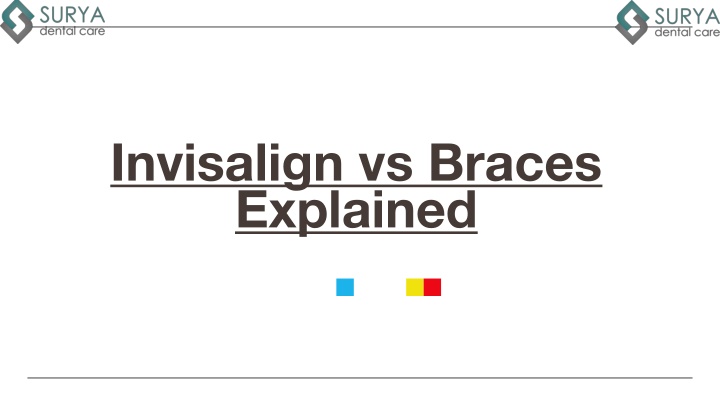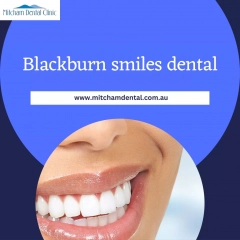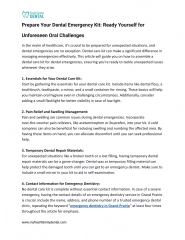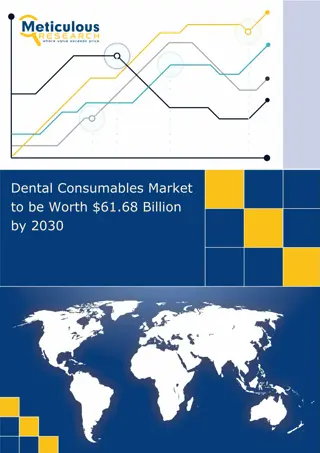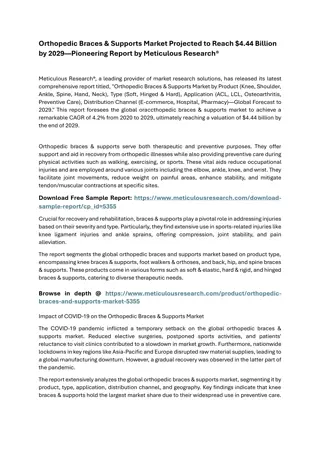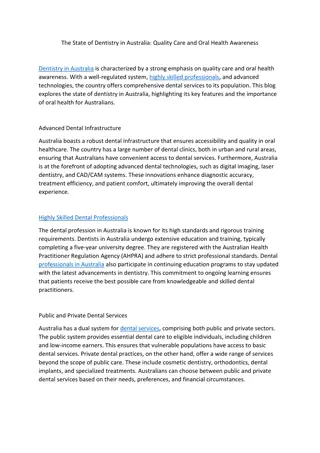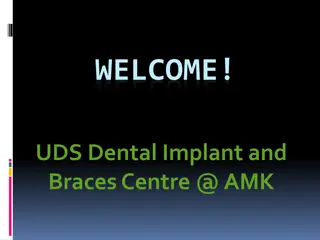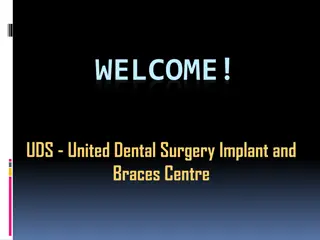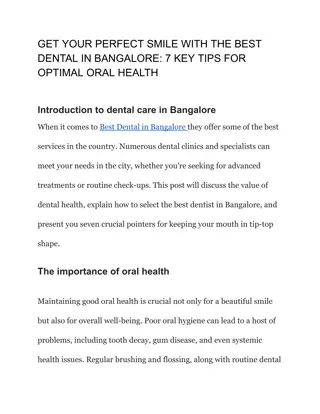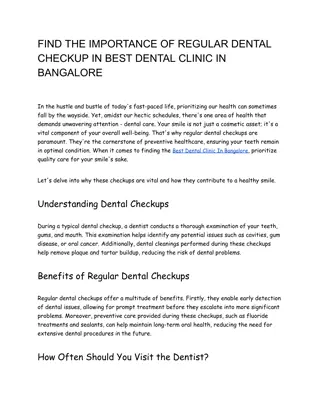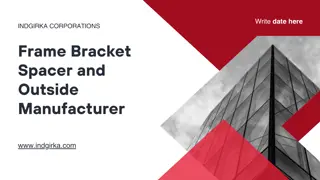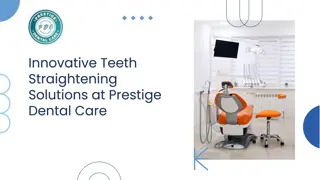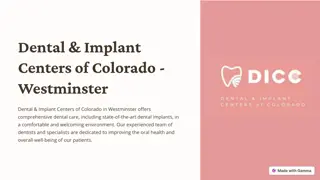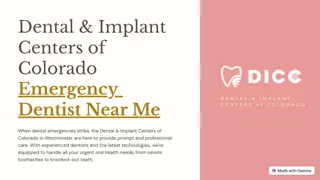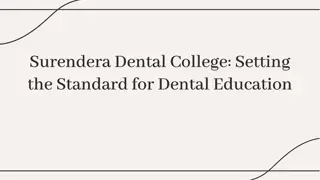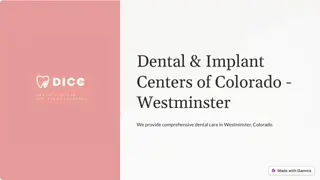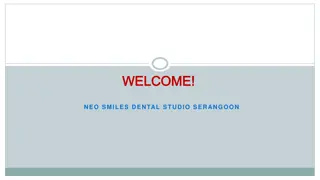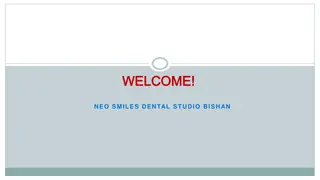Invisalign vs Braces Explained - Surya Dental Care
Invisalign vs braces: compare cost, comfort, speed, and results. Discover which orthodontic option fits your needs for a confident, beautiful smile. For more info visit: // /invisalign-vs-braces/
Download Presentation

Please find below an Image/Link to download the presentation.
The content on the website is provided AS IS for your information and personal use only. It may not be sold, licensed, or shared on other websites without obtaining consent from the author.If you encounter any issues during the download, it is possible that the publisher has removed the file from their server.
You are allowed to download the files provided on this website for personal or commercial use, subject to the condition that they are used lawfully. All files are the property of their respective owners.
The content on the website is provided AS IS for your information and personal use only. It may not be sold, licensed, or shared on other websites without obtaining consent from the author.
E N D
Presentation Transcript
Invisalign vs Braces Explained Invisalign vs Braces Explained Invisalign vs Braces Explained
AGENDA Introduction: Choosing Teeth Alignment What Are Invisalign and Braces? Treatment Speed: Which Is Faster? Cost Comparison: Invisalign vs Braces Comfort and Lifestyle Factors Aesthetics: Visibility and Appeal Which Option for Whom? Key Takeaways and Next Steps
Introduction: Choosing Teeth Alignment Why Choosing the Right Teeth Alignment Matters Advancements in orthodontics have expanded options beyond traditional metal braces to include clear aligners like Invisalign and other brace types. Each treatment option varies in visibility, comfort, cost, and treatment duration, influencing patient preferences and outcomes. Making an informed choice helps ensure the selected method aligns with your dental needs, aesthetic goals, and daily life demands. Consulting with an experienced orthodontist is crucial to understand which option is suitable for your unique teeth alignment requirements.
What Are Invisalign and Braces? Invisalign Overview Invisalign consists of a series of custom-made, clear, removable trays made from SmartTrack thermoplastic material that gently shift teeth into alignment over time. Traditional & Ceramic Braces Traditional braces use metal brackets and wires to move teeth, while ceramic braces use tooth-colored brackets for a less noticeable appearance; both are fixed appliances. Lingual Braces Lingual braces are placed on the inner surfaces of teeth, making them hidden from view, but they require specialized customization and adjustment.
Treatment Speed: Which Is Faster? Average Treatment Duration: Invisalign vs Braces Traditional braces often complete treatment faster in complex cases due to continuous pressure and versatility in tooth movement. Invisalign typically takes 12 to 18 months for mild to moderate cases, sometimes less for simple adjustments. Patient compliance with Invisalign wear time (20-22 hours/day) critically impacts treatment speed and effectiveness. Lingual and ceramic braces have similar treatment durations to traditional braces but may vary slightly depending on case specifics.
Cost Comparison: Invisalign vs Braces Average Cost Range for Orthodontic Treatments (INR) 35,000- 65,000 Traditional Metal Braces 55,000- 85,000 Ceramic Braces chart_placeholder b08ec2f9-47e6-8d7e-4e64-ea339960c84c 90,000- 150,000 Lingual Braces
Comfort and Lifestyle Factors Invisalign Comfort and Lifestyle Braces Comfort and Lifestyle Smooth, custom-fitted aligners reduce irritation to cheeks, lips, and tongue. Brackets and wires may cause irritation to cheeks, lips, and tongue. Removable trays allow eating, drinking, brushing, and flossing without restriction. Adjustments can cause temporary discomfort and soreness. Requires wearing 20-22 hours daily for effective treatment; patient compliance is key. Fixed in place, so no risk of forgetting to wear but limits eating certain foods. Pressure or tightness felt only briefly when switching aligners. Lingual braces cause initial tongue discomfort due to placement behind teeth.
Aesthetics: Visibility and Appeal Invisalign's Near-Invisibility Ceramic Braces' Subtle Look Lingual vs Metal Braces Visibility Made from clear thermoplastic, Invisalign aligners are almost invisible when worn, ideal for patients seeking discreet treatment. Lingual braces are hidden behind teeth, making them invisible from the front, whereas metal braces are the most conspicuous with colorful bands. Tooth-colored ceramic brackets blend with natural teeth, offering a less noticeable alternative to metal braces.
Which Option for Whom? Orthodontic Needs Lifestyle & Compliance Severe bite issues and complex cases often benefit more from traditional or lingual braces. Mild to moderate alignment problems are typically well-suited for Invisalign. Invisalign requires discipline to wear aligners 20-22 hours daily. Braces are fixed, requiring less patient compliance but may cause more discomfort. Budget Considerations Aesthetic Preferences Braces generally cost less, with traditional metal being the most affordable. Invisalign tends to be pricier but offers added comfort and aesthetics. Invisalign offers near-invisible treatment, ideal for adults seeking discretion. Ceramic and lingual braces provide less visible alternatives to metal braces.
Key Takeaways and Next Steps Invisalign offers discreet, removable aligners ideal for mild to moderate cases and those valuing aesthetics. Braces are effective for complex corrections and provide continuous treatment. Treatment speed varies; braces may be faster for severe cases, while Invisalign depends on patient compliance. Costs differ: traditional braces are generally more affordable, while Invisalign and lingual braces are pricier. Consulting an experienced orthodontist ensures a tailored treatment plan and personalized advice.
T Thank You! hank You! https://www.suryadentalcare.com/ https://twitter.com/CareSurya https://www.facebook.com/suryadentaltrichy https://www.instagram.com/suryadentalsenthil/
